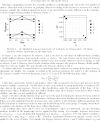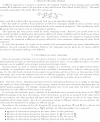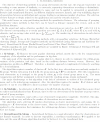Phenotype similarities in automatically grouped T2D patients by variation-based clustering of IL-1β gene expression
- PMID: 37868088
- PMCID: PMC10588079
Phenotype similarities in automatically grouped T2D patients by variation-based clustering of IL-1β gene expression
Abstract
Background: Analyzing longitudinal gene expression data is extremely challenging due to limited prior information, high dimensionality, and heterogeneity. Similar difficulties arise in research of multifactorial diseases such as Type 2 Diabetes. Clustering methods can be applied to automatically group similar observations. Common clinical values within the resulting groups suggest potential associations. However, applying traditional clustering methods to gene expression over time fails to capture variations in the response. Therefore, shape-based clustering could be applied to identify patient groups by gene expression variation in a large time metabolic compensatory intervention.
Objectives: To search for clinical grouping patterns between subjects that showed similar structure in the variation of IL-1β gene expression over time.
Methods: A new approach for shape-based clustering by IL-1β expression behavior was applied to a real longitudinal database of Type 2 Diabetes patients. In order to capture correctly variations in the response, we applied traditional clustering methods to slopes between measurements.
Results: In this setting, the application of K-Medoids using the Manhattan distance yielded the best results for the corresponding database. Among the resulting groups, one of the clusters presented significant differences in many key clinical values regarding the metabolic syndrome in comparison to the rest of the data.
Conclusions: The proposed method can be used to group patients according to variation patterns in gene expression (or other applications) and thus, provide clinical insights even when there is no previous knowledge on the subject clinical profile and few timepoints for each individual.
Keywords: Gene expression; Knowledge Discovery in Databases; Longitudinal data; Shape-based clustering; Type 2 Diabetes.
Copyright © 2023 International Federation of Clinical Chemistry and Laboratory Medicine (IFCC). All rights reserved.
Figures









References
-
- Cruz NG, Sousa LP, Sousa MO, Pietrani NT, Fernandes AP, Gomes KB. The linkage between inflammation and Type 2 diabetes mellitus. Diabetes Res Clin Pract. 2013. Feb;99(2):85-92. doi: 10.1016/j.diabres.2012.09.003. Epub 2012 Dec 14. PMID: 23245808. - PubMed
-
- Nackiewicz D, Dan M, He W, Kim R, Salmi A, Rütti S, Westwell-Roper C, Cunningham A, Speck M, Schuster-Klein C, Guardiola B, Maedler K, Ehses JA. TLR2/6 and TLR4-activated macrophages contribute to islet inflammation and impair beta cell insulin gene expression via IL-1 and IL-6. Diabetologia. 2014. Aug;57(8):1645-1654. doi: 10.1007/s00125-014-3249-1. Epub 2014 May 12. PMID: 24816367. - PubMed
-
- Florez JC. Precision Medicine in Diabetes: Is It Time? Diabetes Care. 2016. Jul;39(7):1085-1088. doi: 10.2337/dc16-0586. Epub 2016 Jun 11. PMID: 27289125. - PubMed
-
- Ahlqvist E, Storm P, Käräjämäki A, Martinell M, Dorkhan M, Carlsson A, Vikman P, Prasad RB, Aly DM, Almgren P, Wessman Y, Shaat N, Spégel P, Mulder H, Lindholm E, Melander O, Hansson O, Malmqvist U, Lernmark Å, Lahti K, Forsén T, Tuomi T, Rosengren AH, Groop L. Novel subgroups of adult-onset diabetes and their association with outcomes: a data-driven cluster analysis of six variables. Lancet Diabetes Endocrinol. 2018. May;6(5):361-369. doi: 10.1016/S2213-8587(18)30051-2. Epub 2018 Mar 5. PMID: 29503172. - PubMed
LinkOut - more resources
Full Text Sources
